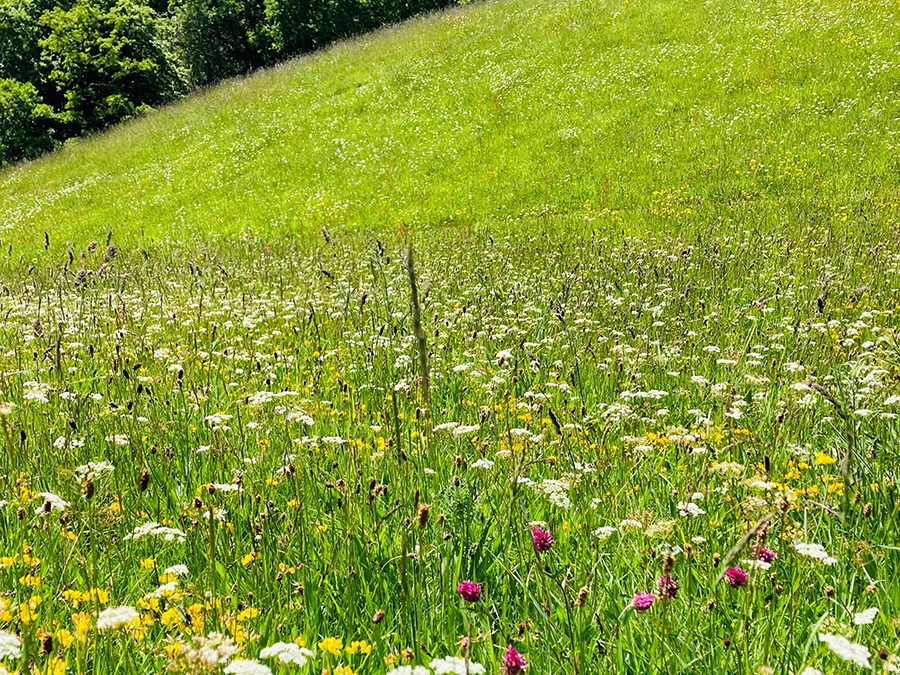A natural English wildflower meadow is such a beautiful sight but sadly due to intensive farming there are very few remaining. Where I live in Cheshire 99% of the wildflower meadows have been lost so every little piece of meadow that can be restored or newly created is a bonus. The wildlife that benefits from these rich habitats is huge and we also benefit from the beauty that they bring to the landscape.
I had no experience of wildflower meadows as my day job is designing gardens. On occasion country gardens would call for sections of wildflowers but generally this is created using wildflower turf for an instant flowery area. A meadow is a different thing altogether but I was immersed in the deep end when I embarked on my own project converting a barn which came with its own 4 acre meadow.
The land is softly undulating with two low hills leading to a stream. The soil is mainly sandy with pockets of clay. The land has never been cultivated so is as nature intended but to enable a meadow to flourish this still needs careful management.
Year One
When we acquired the site in August 2019 it had been empty and uncared for for 3 or 4 years. This had resulted in the grass becoming mounded and the ragwort moving in en masse with very few flowers in evidence. The first thing to tackle in the autumn was to harrow the ground to remove the thick thatch that had built up. Following this a small flock of 10 very handsome Cheviot sheep moved onto the land to work their magic. They spent the winter with us happily munching away on the grass and we moved them off in March.
In the April the huge task began of eradicating the ragwort individually so as not to disturb the other plants in the ground. Three years later this is still on going but easily manageable and well worth the effort.
This brought us to the first spring when we had a clearer view of how the ground was looking. The sheep had made huge improvements and the flowers that were hidden before had a chance to emerge and we were delighted with how things had changed. It also allowed us to see that the south side of the land which is sloping with very thin soil was the most abundant with flowers whereas the areas closer to the barn had a much denser grass cover.
That first summer we had the meadow cut and bailed in August. We followed this by sowing yellow rattle seed into the areas where the grass was dominant. Yellow rattle feeds off the roots of the grass resulting in lessening its vigour allowing space to open up for the wildflowers to establish.
The handsome sheep, albeit a new batch of youngsters, returned through the winter to trample and spread the seed in the ground. Just having them move around the site has helped with dispersal of seed and we have clearly seen the benefits with the wildflowers that are in abundance on the south side making an appearance over the brow of the hill and moving into the denser grassy areas.
We are learning as we go along but the results are very noticeable, further updates to follow on how things have developed in years two and three.

